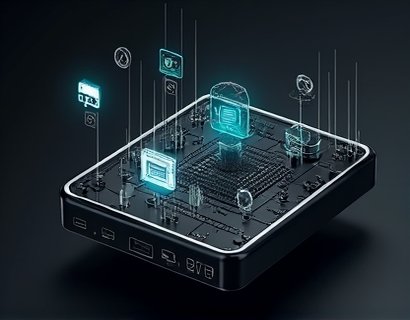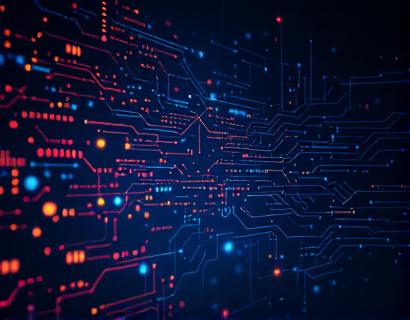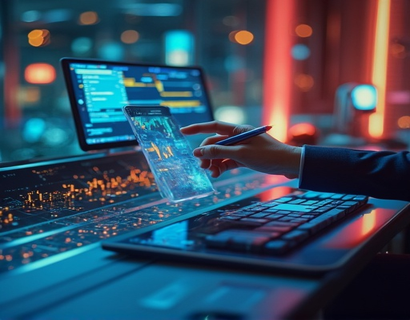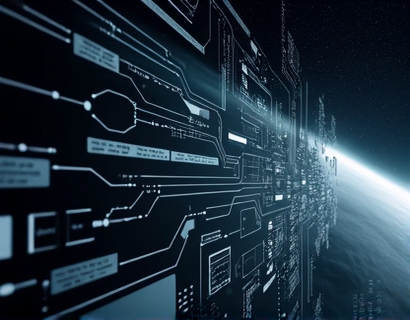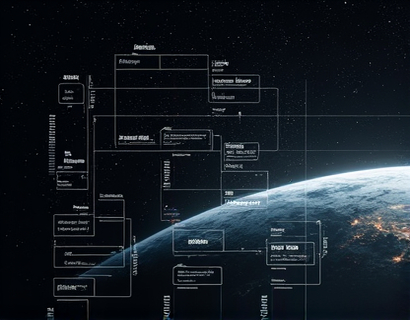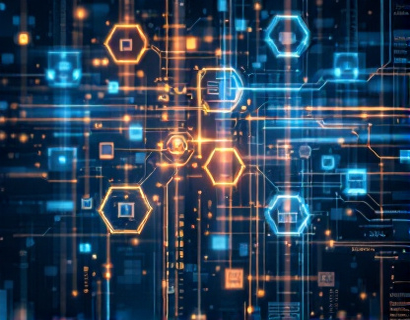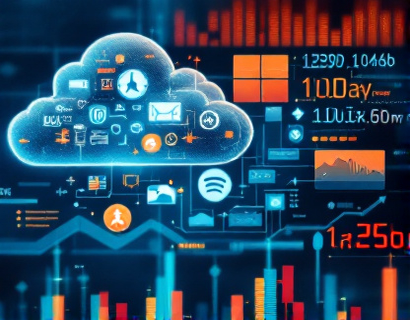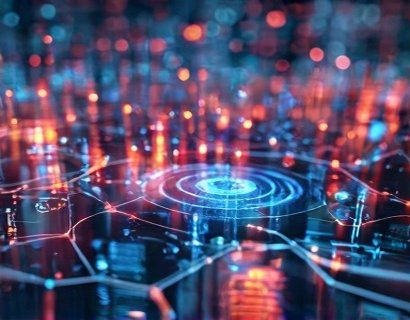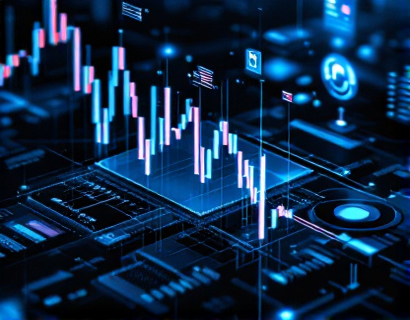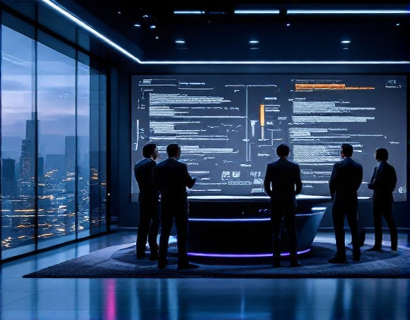Unlocking Digital Growth: Harnessing AI and Crypto for Enhanced Engagement and Business Success
The intersection of artificial intelligence (AI) and cryptocurrency represents a frontier of unprecedented opportunities for businesses and tech enthusiasts. As we navigate the rapidly evolving landscape of digital transformation, integrating these two powerful technologies can significantly enhance online presence and drive business success. This article delves into strategic insights on how to leverage AI and blockchain to maximize digital engagement and foster growth.
Understanding the Synergy Between AI and Crypto
The synergy between AI and cryptocurrency is rooted in their shared foundation of decentralization, transparency, and innovation. AI, with its ability to process vast amounts of data and uncover patterns, can be harnessed to optimize blockchain networks, improve smart contract functionality, and enhance user experiences. Conversely, the decentralized and secure nature of crypto provides a robust framework for AI applications, ensuring data integrity and user trust.
One of the primary benefits of combining AI and crypto is the creation of more intelligent and efficient blockchain systems. AI can be used to manage and optimize network resources, predict and prevent fraud, and enhance the scalability of blockchain platforms. For instance, machine learning algorithms can analyze transaction patterns to identify anomalies and automate the verification process, reducing the load on network nodes and speeding up transaction times.
Enhancing User Engagement Through AI-Driven Solutions
In the digital age, user engagement is crucial for the success of any online platform. AI technologies offer sophisticated tools to understand user behavior, preferences, and needs, enabling businesses to create personalized and interactive experiences. By integrating AI into crypto-based platforms, companies can offer tailored services that resonate with users, thereby increasing retention and attracting new users.
Personalization is a key area where AI shines. By analyzing user data, AI can recommend crypto assets, trading strategies, and educational content that align with individual preferences. This not only enhances the user experience but also fosters a deeper connection with the platform. For example, an AI-powered chatbot can provide real-time support and guidance, answering queries and offering insights based on the user's interaction history.
Moreover, AI can facilitate community building by identifying and connecting like-minded individuals. Social features within crypto platforms can be enhanced with AI-driven matchmaking algorithms that suggest connections based on shared interests and goals. This fosters a sense of community and encourages active participation, which is vital for the growth and sustainability of any digital ecosystem.
Leveraging Blockchain for Secure and Transparent AI Applications
While AI offers numerous benefits, concerns around data privacy and security remain paramount. Blockchain technology addresses these concerns by providing a decentralized and immutable ledger for data storage and transaction processing. By integrating blockchain into AI applications, businesses can ensure that user data is securely managed and transparently handled.
Smart contracts, a core feature of blockchain, can automate and enforce agreements between parties without the need for intermediaries. In the context of AI, smart contracts can be used to manage data access and usage rights, ensuring that user data is only shared with authorized parties and for specific purposes. This not only builds trust but also complies with regulatory requirements such as GDPR.
Additionally, blockchain can enhance the transparency of AI decision-making processes. By recording AI decisions on a blockchain, users can trace the logic and data used to arrive at a particular outcome. This level of transparency is crucial for maintaining user confidence and addressing ethical concerns related to AI.
Optimizing Business Operations with AI and Crypto
Businesses can significantly benefit from the integration of AI and crypto in various operational aspects. Supply chain management, for instance, can be revolutionized by using blockchain to track the provenance and movement of goods, while AI can optimize logistics and predict demand. This combination ensures efficiency, reduces costs, and enhances customer satisfaction.
Financial operations are another area where AI and crypto intersect. Cryptocurrencies can streamline cross-border payments and reduce transaction fees, while AI can provide advanced analytics for risk management and fraud detection. By leveraging these technologies, businesses can operate more efficiently and securely, gaining a competitive edge in the market.
Furthermore, AI-driven marketing strategies can be powered by crypto-based incentives. For example, businesses can use tokenized loyalty programs to reward customers for engaging with their content or making purchases. This not only encourages repeat business but also creates a vibrant ecosystem where users are motivated to participate and contribute to the platform's growth.
Building a Robust Ecosystem Through Decentralized Applications
Decentralized applications (dApps) represent a new paradigm in digital services, combining the strengths of AI and blockchain. dApps can offer decentralized versions of traditional applications, such as social media, gaming, and finance, with enhanced features and greater user control. By leveraging AI, these dApps can provide intelligent and adaptive experiences that evolve based on user interactions.
One of the key advantages of dApps is their resilience to censorship and downtime. Since they operate on a decentralized network, they are less vulnerable to single points of failure. AI can further enhance this resilience by dynamically adjusting resources and optimizing performance based on real-time data. This ensures that the application remains responsive and reliable, even under high load conditions.
Moreover, dApps can foster innovation by allowing developers to build on existing blockchain platforms and integrate AI services. This open-source approach encourages collaboration and accelerates the development of new features and functionalities. As more developers contribute to the ecosystem, the platform becomes more robust and attractive to users.
Challenges and Considerations
While the potential benefits of integrating AI and crypto are significant, there are also challenges and considerations that must be addressed. One of the primary challenges is the technical complexity involved in developing and maintaining these systems. Businesses need to invest in skilled personnel or partner with experts who can navigate the intricacies of both AI and blockchain technologies.
Regulatory compliance is another critical aspect. The crypto space is still evolving, and regulations vary by region. Ensuring that AI and crypto integrations comply with local laws and standards is essential to avoid legal issues and maintain user trust. Staying informed about regulatory developments and proactively adapting to changes can help mitigate these risks.
Privacy concerns also need to be carefully managed. While blockchain offers transparency, it can also expose sensitive data if not properly secured. Implementing robust encryption and access control mechanisms is crucial to protect user information. Additionally, transparent communication about data usage and privacy policies can help build user confidence.
Case Studies and Real-World Applications
Several successful projects demonstrate the practical applications of AI and crypto integration. For example, Decentralized Autonomous Organizations (DAOs) leverage blockchain for governance and AI for decision-making processes. These organizations can automate fund management, voting mechanisms, and strategic planning, creating a more efficient and transparent structure.
In the realm of finance, decentralized finance (DeFi) platforms use AI to enhance trading algorithms and risk assessment models. These platforms offer a range of financial services, from lending and borrowing to derivatives trading, all powered by smart contracts and AI-driven insights. The combination of AI and crypto in DeFi has the potential to democratize access to financial services and increase market efficiency.
Another notable application is in the gaming industry, where crypto and AI are transforming the way games are developed and experienced. Blockchain-based gaming platforms use NFTs (non-fungible tokens) to represent in-game assets, ensuring ownership and scarcity. AI can enhance gameplay by creating dynamic and adaptive environments, providing a more immersive and engaging experience for players.
Future Trends and Opportunities
As AI and crypto continue to evolve, several trends and opportunities are on the horizon. One significant trend is the rise of AI-powered NFTs, which combine the uniqueness of NFTs with the intelligence of AI-generated content. These NFTs can represent unique digital art, music, or even virtual real estate, opening new avenues for creativity and investment.
Another area of growth is the integration of AI with the Internet of Things (IoT) on blockchain networks. This combination can lead to smarter and more autonomous devices, capable of making data-driven decisions and interacting seamlessly within a decentralized ecosystem. The potential applications range from smart homes to industrial automation, driving innovation across various industries.
Furthermore, the development of interoperable blockchain platforms will play a crucial role in the widespread adoption of AI and crypto integrations. Standards and protocols that enable seamless communication between different blockchain networks will facilitate the creation of more complex and versatile applications, enhancing the overall user experience.
Conclusion
Harnessing the power of AI and crypto represents a transformative opportunity for businesses and tech enthusiasts alike. By integrating these technologies, organizations can unlock new levels of engagement, security, and efficiency, positioning themselves for success in the digital age. While challenges exist, the potential benefits far outweigh the obstacles, making this an exciting and promising frontier for innovation.
As the landscape continues to evolve, staying informed and adaptable will be key to capitalizing on these opportunities. By embracing the synergy between AI and crypto, businesses can not only enhance their online presence but also drive meaningful growth and impact in the tech frontier.



